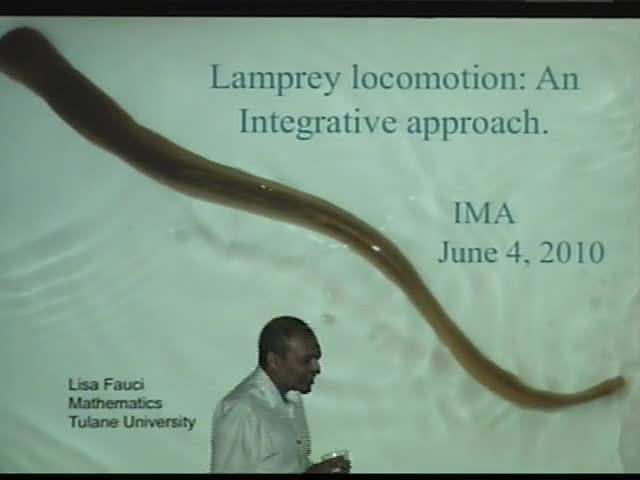Lamprey locomotion: An integrative muscle mechanics - fluid dynamics model
Presenter
June 4, 2010
Keywords:
- Fluid dynamics
MSC:
- 58D30
Abstract
In an effort towards an understanding of the generation and control of vertebrate locomotion, including the role of the CPG and its interactions with reflexive feedback, muscle mechanics,
and external fluid dynamics, we study a simple vertebrate, the lamprey.
Lamprey body undulations are a result of a wave of neural activation that passes from head to tail, causing a wave of muscle
activation. These active forces are mediated by passive structural forces.
We present a model that includes the complete fluid-structure interaction problem, in which the body is elastic and deforms according to both internal muscular forces and
external fluid forces. The model uses an immersed-boundary framework for solving the Navier-Stokes equations of fluid motion, and includes a nonlinear muscle model, an elastic body, and an adaptive solver that is accurate at length and velocity scales that are appropriate for swimming lampreys.
The effects of various body and environmental properties, including tapered and uniform body shapes, different body stiffness, varying muscle parameters, and a range of viscosities are examined as they relate
to swimming dynamics and energy requirements. (This is joint work with Chia-yu Hsu, Eric Tytell, Thelma Williams, Tyler McMillen and Avis Cohen.)
